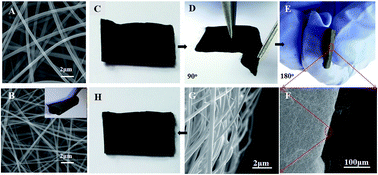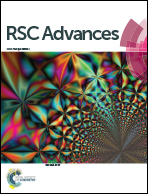Flexible polypyrrolone-based microporous carbon nanofibers for high-performance supercapacitors
Abstract
Flexible materials have drawn considerable attention due to the demand for wearable and flexible electronic products. Seeking new kinds of precursors for preparing carbon nanofibers with good flexibility for high-performance supercapacitors is a hot issue. In this work, a flexible polypyrrolone (BBB)/polyimide (PI) composite-based carbon nanofiber membrane (PBPICF) is prepared by a facile electrospinning and carbonization process. The PBPICF membranes exhibit a three-dimensional (3D) porous, fluffy and self-standing structure with good mechanical performance and flexibility, and can be arbitrarily bent and folded. PBPICF-65-35 (consisting of BBB (65 wt%) and PI (35 wt%)) exhibits a high specific capacitance of 172.44 F g−1 in 6 M KOH aqueous solution, which is two-fold more than that of commercial polyacrylonitrile-based carbon nanofibers. In addition, PBPICF-65-35 also displays good power density (90 W kg−1) and energy density (19.4 W h kg−1), and the capacitance remains at 96% even after 10 000 cycles at 1.0 A g−1. Therefore, the simple preparation and good capacitance performance of PBPICFs make them a promising binder-free electrode for wearable supercapacitors.



 Please wait while we load your content...
Please wait while we load your content...